#Graphite Materials
Explore tagged Tumblr posts
Text

i would like to share this tuff ass hoffman drawing i did on a chiikawa sticker sheet
#the material was like smooth and dense#which is like the worst thing to draw on w pencil#and the graphite has a glare like what#btw that fuckass cursive is js the tape for mark in saw iv#saw#mark hoffman#saw 3d#chiikawa
41 notes
·
View notes
Text

Between Worlds.
18 inch x 24 inch, water-based oils and metallic acrylic on paper.
Prints Available: www.bridgetwinder.com/shop
-
All rights reserved. Unauthorized duplication is a violation of applicable laws without artist consent or a credit line: Bridget Winder Art.
#between worlds#mrs coulter#his dark materials#bridgetwinderart#art#artwork#painting#paint#drawing#draw#sketch#sketching#tattoo#graphite#tattoos#graffiti#late night sketching#artist#badass#love#daemon#monkey#ruth wilson#subtle knife#lyra valkyria#will perry#lord asriel#metatron#roger parslow#pantalaimon
33 notes
·
View notes
Text

A newly discovered type of superconductor is also a magnet
Magnets and superconductors go together like oil and water—or so scientists have thought. But a new finding by MIT physicists is challenging this century-old assumption. In a paper appearing in the journal Nature, the physicists report that they have discovered a "chiral superconductor"—a material that conducts electricity without resistance, and also, paradoxically, is intrinsically magnetic. What's more, they observed this exotic superconductivity in a surprisingly ordinary material: graphite, the primary material in pencil lead. Graphite is made from many layers of graphene—atomically thin, lattice-like sheets of carbon atoms—that are stacked together and can easily flake off when pressure is applied, as when pressing down to write on a piece of paper. A single flake of graphite can contain several million sheets of graphene, which are normally stacked such that every other layer aligns. But every so often, graphite contains tiny pockets where graphene is stacked in a different pattern, resembling a staircase of offset layers.
Read more.
#Materials Science#Science#Superconductors#Superconductivity#Magnetism#MIT#Chirality#Graphite#Graphene#Twistronics
11 notes
·
View notes
Text
Day 397: Untitled (abstract watercolor, 1913)

link
–This image is part of the public domain, meaning you can do anything you want with it! (you could even sell it as a shirt, poster or whatever, no need to credit it!)–
#public domain#art#copyright#free art#open source#creative commons#no copyright#watercolor#watercolour art#watercolor painting#aquarelle#wassily kandinsky#paintings#china ink#chinese ink#graphite#abstract art#abstract#abstracart#abstract watercolor#abstract painting#modern art#contemporary art#colorful#album cover material#watercolor on paper
15 notes
·
View notes
Text
COLOSSAL
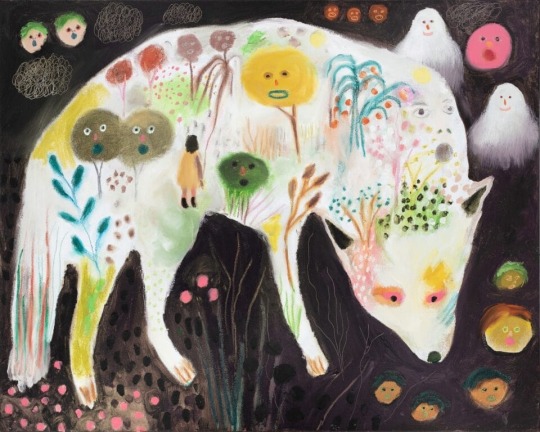
“Unearthing Buried Gods.” Michael McGrath
Michael McGrath Summons Symbolism and a Folk Art Style in Expressive Paintings
November 6, 2024
Art
Kate Mothes
From fanged cats and all-seeing ravens to anthropomorphized botanicals and disembodied faces, Michael McGrath’s uncanny works nod to the symbol-rich, flat compositions of folk art or “naïve” painting. His mixed-media works combine materials like graphite, oil paint and oil stick, ink, and acrylic on a variety of surfaces, including wood, canvas, and burlap.
Inspired by the expansive scenes of contemporary artists Peter Doig and Mamma Andersson, and self-taught artists Henry Darger (1892-1973) and William Hawkins (1895-1990), McGrath harnessed a narrative approach in his own practice. “I decided to experiment with figures and storytelling in my painting,” he tells Colossal. He also counts Jim Henson among his influences.
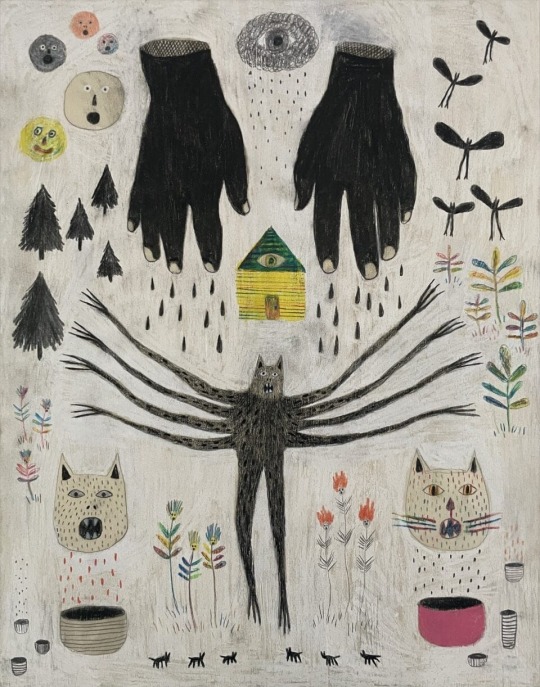
“Threats and competition for tiny vampires” (2023), graphite, colored pencil, and India ink on wood panel, 14 x 11 inches
Populated with an array of characters, from trees with alarmed expressions to tiny, fairy-like black critters with bulbous wings and long legs, McGrath delves into mysterious, emotional tales with plots as enigmatic as they are supernatural.
The artist’s interest in painting evolved from an early fascination with design, especially album covers and advertising in magazines like Spin and Thrasher. “I never had the patience to develop classical skills, so I focused on dimensional and collage work for a while, until I eventually decided to invest more time in painting,” he says.
McGrath’s work will be part of an online group show with MePaintsMe, Slight of Hand, which opens on November 12. In February, he will also have pieces on view in a group show at Court Tree Collective in Brooklyn.
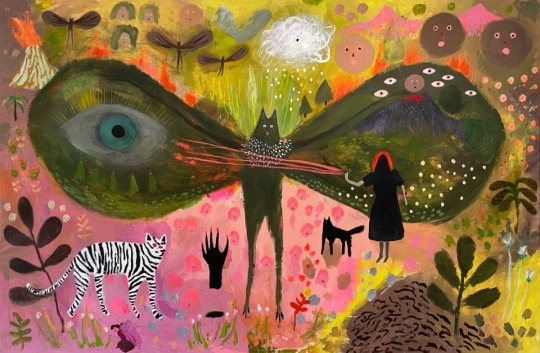
“Monster control, future systems No. 3,” (2024), acrylic, oil stick, and oil on canvas, 78 x 120 inches
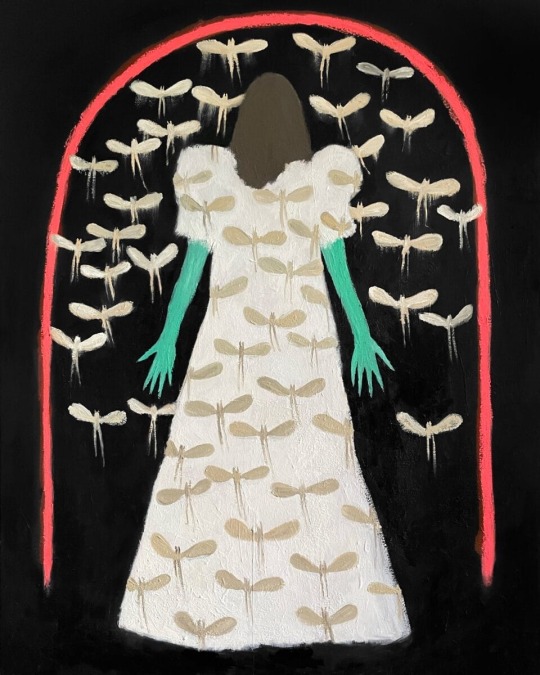
“Night float, threat window” (2024), oil and oil stick on canvas, 60 x 48 inches
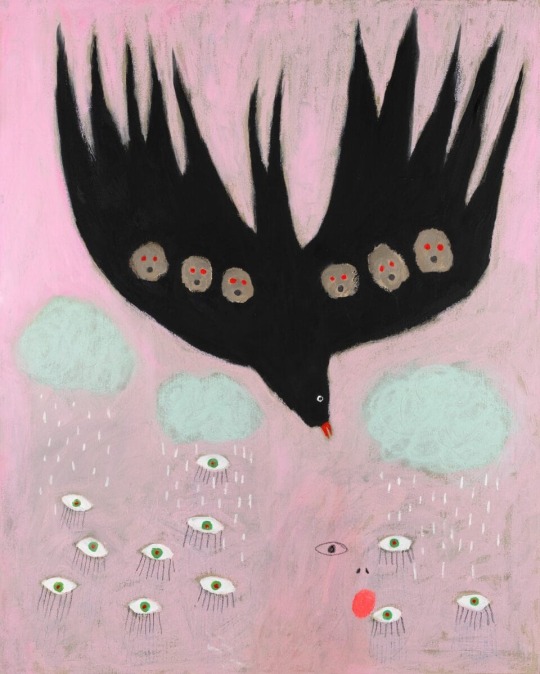
“Hunting songs” (2024), oil, oil stick, and grease pencil on linen, 30 x 24 inches
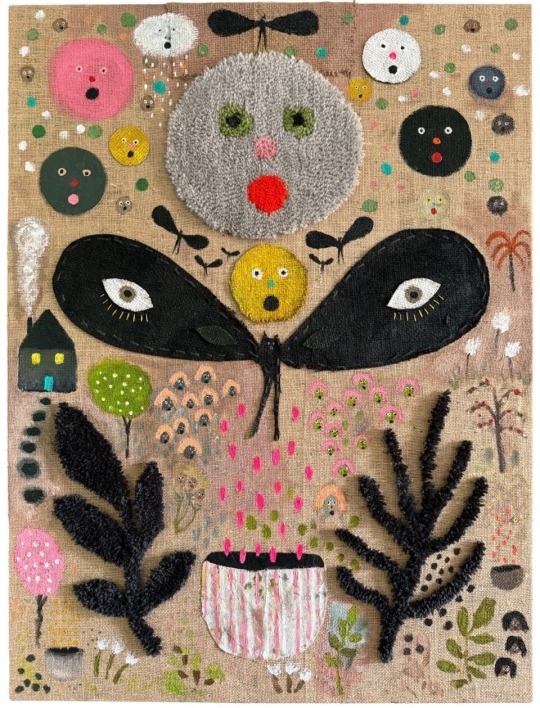
“Muppet moon nightmare choir” (2024), acrylic, acrylic yarn, embroidery thread, painted canvas, and burlap on burlap, 40 x 30 inches

“Moon float” (2024), acrylic, watercolor crayon, enamel, and oil pastel on canvas, 60 x 48 inches

“Stories to frighten your children with and dangerous literature” (2023), oil, oil pastel, and acrylic on linen, 30 x 40

“Cat song, moon riot, No. 2” (2024), oil on canvas, 48 x 36 inches
#colossal#Michael McGrath#Summons Symbolism and a Folk Art Style#in Expressive Paintings#November 6 2024#Art#kate mothes#anthropomorphized botanicals and disembodied faces#compositions of folk art or “naïve” painting#His mixed-media works combine materials like graphite oil paint and oil stick#ink#and acrylic on a variety of surfaces#including wood canvas and burlap#Inspired by the expansive scenes#contemporary artists Peter Doig and Mamma Andersson#and self-taught artists Henry Darger (1892-1973)#and William Hawkins (1895-1990)#McGrath harnessed a narrative approach in his own practice#artist painter#original art#art work#art style#art colors#ilustration painter#ooctoopussy#xpuigc#xpuigc bloc
13 notes
·
View notes
Text
Some memes + art from a project I’ve been calling “Nim”:
Context isn’t totally necessary, but the cliff notes are that story is set in an urban fantasy world, Nim and Lune are adopted siblings / father and daughter. They are part of a rarely-seen species who live isolated from the rest of the world and have immense magical power, but left their home in search of a better life shortly before being captured by local mad scientist Sammy. Nim was taken in by Delilah and her shapeshifting dragon son Dante after she was rescued separately from Lune.
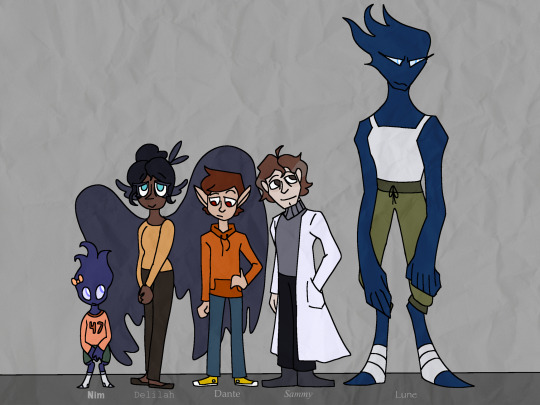
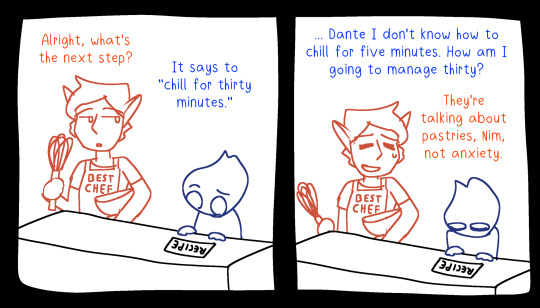
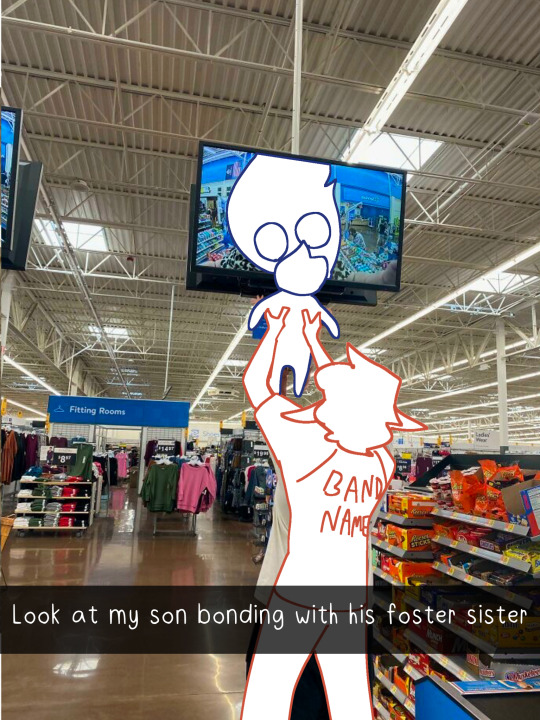


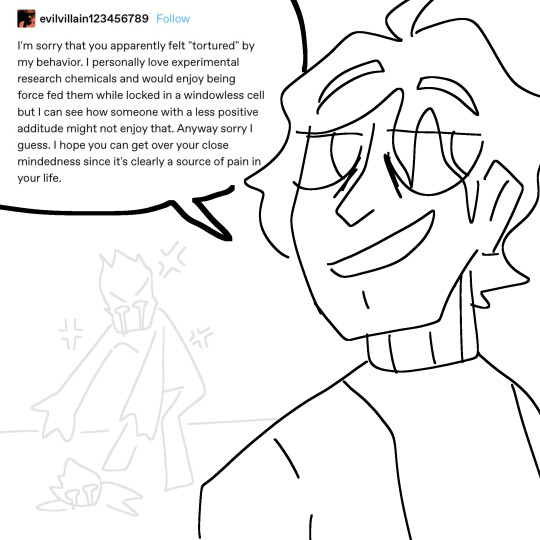

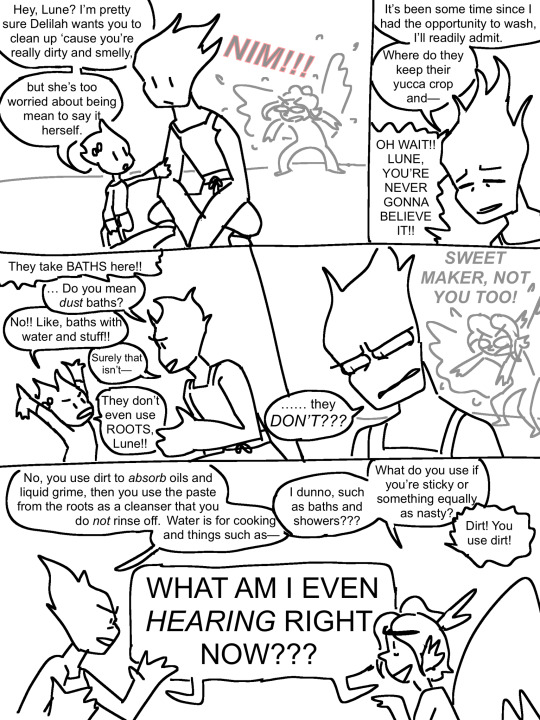
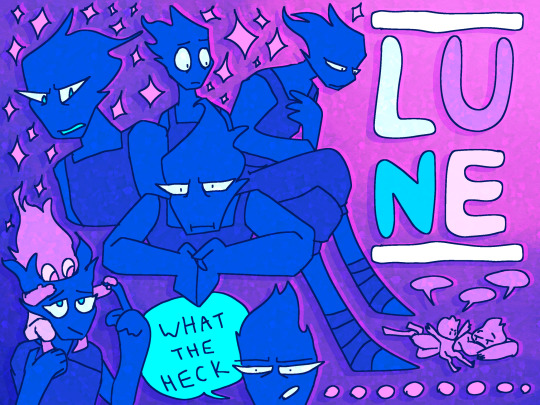
#fun fact: this takes place in that ‘world set in the sketchbook of a teenage girl’ concept idea I posted about#Nim and Lune are what’s known as ‘inklings’—#they’re made up out of the same material as the universe is!#(ink and charcoal and other such stuff)#an inkling is made when graphite smudges#or when a pen blots ink on the page#they are made of imperfection and are seen as dangerous because of their refusal to abide by the maker’s laws#they’re pretty chill people who just want to be left alone most of the time#but your average sketchbook citizen is absolutely TERRIFIED of inklings and see them as bogeymen#stuff by sofie#original character#original character design#original character drawing#original character art#the cartooniverse#art dump
14 notes
·
View notes
Text
Okay I see why dorodangos are priced the way they are
#i guess my next question is how efficient can i make this process before it defeats the purpose#of like. polishing something with slow deliberate meditative patience.#not everything needs to be about money not every hobby needs to be monetized#but i feel like a polished sphere does have some amount of universal appeal#if i have to use esoteric materials i already have some pigment or graphite lying around somewhere#mostly i have access to dirt and clay and am trying to find something to do that doesn't make my hands worse#or like that i could keep doing even if my dexterity keeps getting bound up further#i do not know what the appropriate plural for dorodango#if nothing else it's nice to be getting my hands dirty again so to speak#i guess#ive made a lot of elaborate difficult to make things and i cant overstate how satisfying forming a perfect polished sphere out of dirt is
2 notes
·
View notes
Text
Sealing Solutions Redefined- Exploring Gaskets, Materials, and the Innovation of Silicone Sheets
In the intricate machinery of various industries, the humble gasket stands as a guardian, ensuring tight seals and preventing leaks that could disrupt operations. At the heart of these sealing solutions lie carefully selected materials, each chosen for its unique properties and suitability for specific applications. Among these materials, silicone sheets have emerged as a versatile option,…
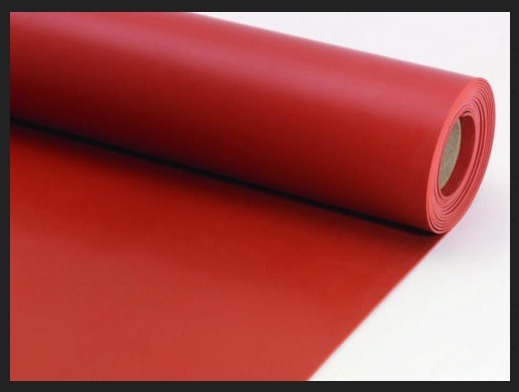
View On WordPress
2 notes
·
View notes
Text
Graphite Sheets- The Ultimate Solution for High-Performance Sealing Applications
Graphite sheets are an essential industrial material known for their excellent thermal conductivity, chemical resistance, and flexibility. These sheets are widely used in sealing, insulation, and high-temperature applications across various industries. Their unique properties make them a preferred choice for applications that demand durability and efficiency. Key Features of Graphite…

View On WordPress
0 notes
Text
iStar Materials: Redefining Excellence in Refractory Solutions : Refracarb (substitute of carbores)
🌟 iSTAR Materials: Redefining Excellence in Refractory Solutions 🌟
📈 Our Achievements (Last 3 Years):
REFRACARB® (Carbores Substitute): 20,000 MT
Ferro Silicon Nitride: 5,000 MT
Silicon Carbide: 3,000 MT
Carbon Black N990: 1,000 MT
🔥 Our Game-Changing Products: 1️⃣ iSTAR Refracarb® – High-performance coal-tar substitute for tap hole clay & magnesia-carbon bricks. 2️⃣ iSTAR Ferro Silicon Nitride – Boosts wear resistance for tap hole clay and mudgun mass. 3️⃣ iSTAR Silicon Carbide – Withstands extreme temperatures and chemicals effortlessly. 4️⃣ iSTAR Carbon Black N990 – Elevates durability and thermal stability in refractory applications.
✨ Why Choose iSTAR Materials? ✔️ Cost-effective and durable solutions. ✔️ Environmentally friendly alternatives. ✔️ Expert guidance and product samples available.
📍 Bhilai, Chhattisgarh, India 📞 +91 96305 20016 | ✉️ [email protected] 🌐 www.istarmaterials.com 🔗 Find us on LinkedIn: iSTAR Materials
Let’s build the future of refractories together! 💪
#refracarb#refracarb coal tar pitch#refcarb#refractory#refracarb a engineered coal tar pitch#Refracarb#istarmaterials_refracarb#istar_refracarb#istarmaterials#refractory solution provider#carbon black n990#ferosilicon nitride#natural graphite#refractory solution#istar materials#bhilai cg istar
1 note
·
View note
Text

Working on Mrs. Coulter from His Dark Materials! Follow along on Instagram: @bridgetwinder or Tik Tok: @bridgetwinder
-
All rights reserved. Unauthorized duplication is a violation of applicable laws without artist consent or a credit line: Bridget Winder Art.
-
WEBSITE: www.BridgetWinder.com
PATREON: www.patreon.com/bridgetwinder
#mrs coulter#bridgetwinderart#art#artist#drawing#draw#sketch#sketching#artwork#tattoo#graphite#tattoos#graffiti#love#badass#soul#spirit#daemons and dust#daemons of the shadow realm#his dark materials#lyra belacqua#will parry#lord asriel#pan#spectors#subtle knife#ruth wilson#ruth wilson edit#alethiometer
9 notes
·
View notes
Text

Revolution in friction: A way to make super-smooth materials
Scientists from the Faculty of Physics and Applied Informatics at the University of Lodz have published an article on friction in the journal Small. Their research on "bismuth islands" moving on the surface of graphite confirmed the existence of a totally new form of so-called superlubricity—a friction-free contact between two solid bodies. This discovery could revolutionize the way we design nanoscale machines, and even vehicles, in the future. By understanding these processes, we can create devices that can operate much more efficiently, saving on energy and resources. Scientists led by Dr. Hab. Paweł Kowalczyk, associate professor at the University of Lodz, have discovered a new phenomenon related to the disappearance of friction—superlubricity. This special phenomenon was observed at the contact of two solid materials, bismuth and graphite.
Read more.
19 notes
·
View notes
Text
#Battery Chemical Supplier#Battery Additives#Battery Material Suppliers#Battery Parts Suppliers#Battery Parts & Chemicals#DYNA FLOCK#LIGNIN VANISPERSE#TUBULAR BAGS (GAUNTLETS)#CORK POWDER MOLDCOR AND GATE COAT COMPOUNDS#BARIUM SULPHATE (RANKEM BRAND)#BOTTOM BARS & TOP BARS#CARBON BLACK PHILLIPS BRAND#SODIUM SULPHATE (RANKEM BRAND)#AMMONIUM SULPHATE (RANKEM BRAND)#SLS NEEDLES#GRAPHITE#SPECIALITY CARBON BLACK VULCAN XC72R#TETRABASIC LEAD SULFATE SURECURE100#HUMIC ACID#CARBON CABOT PBX 135#VANISPERSE DCA#PREMIXED EXPANDERS
0 notes
Text
Jeong Min Park earns 2024 Schmidt Science Fellowship
New Post has been published on https://thedigitalinsider.com/jeong-min-park-earns-2024-schmidt-science-fellowship/
Jeong Min Park earns 2024 Schmidt Science Fellowship
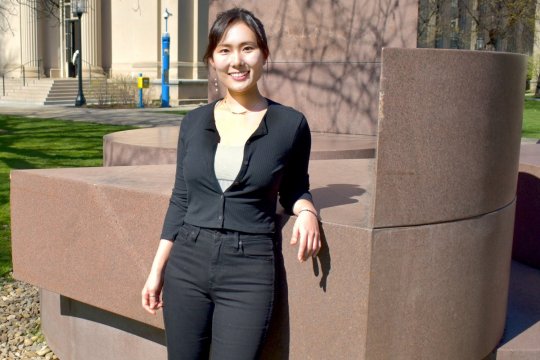

Physics graduate student Jeong Min (Jane) Park is among the 32 exceptional early-career scientists worldwide chosen to receive the prestigious 2024 Schmidt Science Fellows award.
As a 2024 Schmidt Science Fellow, Park’s postdoctoral work will seek to directly detect phases that could host new particles by employing an instrument that can visualize subatomic-scale phenomena.
With her advisor, Pablo Jarillo-Herrero, the Cecil and Ida Green Professor of Physics, Park’s research at MIT focuses on discovering novel quantum phases of matter.
“When there are many electrons in a material, their interactions can lead to collective behaviors that are not expected from individual particles, known as emergent phenomena,” explains Park. “One example is superconductivity, where interacting electrons combine together as a pair at low temperatures to conduct electricity without energy loss.”
During her PhD studies, she has investigated novel types of superconductivity by designing new materials with targeted interactions and topology. In particular, she used graphene, atomically thin two-dimensional layers of graphite, the same material as pencil lead, and turned it into a “magic” material. This so-called magic-angle twisted trilayer graphene provided an extraordinarily strong form of superconductivity that is robust under high magnetic fields. Later, she found a whole “magic family” of these materials, elucidating the key mechanisms behind superconductivity and interaction-driven phenomena. These results have provided a new platform to study emergent phenomena in two dimensions, which can lead to innovations in electronics and quantum technology.
Park says she is looking forward to her postdoctoral studies with Princeton University physics professor Ali Yazdani’s lab.
“I’m excited about the idea of discovering and studying new quantum phenomena that could further the understanding of fundamental physics,” says Park. “Having explored interaction-driven phenomena through the design of new materials, I’m now aiming to broaden my perspective and expertise to address a different kind of question, by combining my background in material design with the sophisticated local-scale measurements that I will adopt during my postdoc.”
She explains that elementary particles are classified as either bosons or fermions, with contrasting behaviors upon interchanging two identical particles, referred to as exchange statistics; bosons remain unchanged, while fermions acquire a minus sign in their quantum wavefunction.
Theories predict the existence of fundamentally different particles known as non-abelian anyons, whose wavefunctions braid upon particle exchange. Such a braiding process can be used to encode and store information, potentially opening the door to fault-tolerant quantum computing in the future.
Since 2018, this prestigious postdoctoral program has sought to break down silos among scientific fields to solve the world’s biggest challenges and support future leaders in STEM.
Schmidt Science Fellows, an initiative of Schmidt Sciences, delivered in partnership with the Rhodes Trust, identifies, develops, and amplifies the next generation of science leaders, by building a community of scientists and supporters of interdisciplinary science and leveraging this network to drive sector-wide change. The 2024 fellows consist of 17 nationalities across North America, Europe, and Asia.
Nominated candidates undergo a rigorous selection process that includes a paper-based academic review with panels of experts in their home disciplines and final interviews with panels, including senior representatives from across many scientific disciplines and different business sectors.
#2024#America#Asia#Awards#honors and fellowships#background#Building#Business#Carbon materials#career#change#Collective#Community#computing#Design#dimensions#electricity#Electronics#electrons#energy#Europe#Fault-tolerant quantum computing#form#Fundamental#Future#Graduate#postdoctoral#graphene#graphite#green
1 note
·
View note
Text
Lithium-ion Battery Materials: Powering the Future of Energy Storage
Outline
Introduction to Lithium-ion Battery Materials
Components of Lithium-ion Batteries
Anode Materials
Cathode Materials
Electrolyte Materials
Importance of Battery Materials in Performance
Popular Lithium-ion Battery Materials
Graphite (Anode)
Lithium Cobalt Oxide (Cathode)
Lithium Iron Phosphate (Cathode)
Lithium Nickel Manganese Cobalt Oxide (Cathode)
Electrolyte Solutions
Advancements in Battery Materials Research
Environmental and Safety Considerations
Future Trends in Lithium-ion Battery Materials
Conclusion
FAQs
In the realm of modern energy storage, lithium-ion batteries have emerged as the frontrunner, powering everything from smartphones to electric vehicles. At the heart of these batteries lies a complex interplay of materials meticulously engineered to deliver optimal performance, efficiency, and safety. In this article, we delve into the world of lithium-ion battery materials, exploring their composition, significance, and future prospects.
Components of Lithium-ion Batteries
Anode Materials
The anode of a lithium-ion battery typically consists of graphite, which serves as a host material for lithium ions during charging and discharging cycles. Graphite's layered structure allows for the reversible intercalation and deintercalation of lithium ions, facilitating the battery's operation.
Cathode Materials
On the other side of the battery, the cathode houses materials like lithium cobalt oxide, lithium iron phosphate, or lithium nickel manganese cobalt oxide. These compounds play a crucial role in determining the battery's voltage, energy density, and cycle life.
Electrolyte Materials
The electrolyte, often a liquid or polymer solution containing lithium salts, enables the movement of lithium ions between the anode and cathode while preventing the direct contact of the two electrodes, thus ensuring the battery's stability and safety.
Importance of Battery Materials in Performance
The selection and optimization of battery materials significantly impact the overall performance and longevity of lithium-ion batteries. Factors such as energy density, charging rate, and cycle life are heavily influenced by the choice of anode, cathode, and electrolyte materials.
Popular Lithium-ion Battery Materials
Graphite (Anode)
Graphite remains the most common anode material due to its stability, conductivity, and low cost. Ongoing research aims to enhance graphite's performance through the development of advanced carbon structures and composites.
Lithium Cobalt Oxide (Cathode)
Despite safety concerns associated with cobalt, lithium cobalt oxide continues to be widely used in high-energy-density applications such as consumer electronics. Efforts are underway to reduce cobalt content or explore alternative cathode materials to address supply chain issues and environmental concerns.
Lithium Iron Phosphate (Cathode)
Lithium iron phosphate offers improved safety and thermal stability compared to lithium cobalt oxide, making it suitable for applications where safety is paramount, such as electric vehicles and grid storage systems.
Lithium Nickel Manganese Cobalt Oxide (Cathode)
This ternary cathode material combines the advantages of nickel, manganese, and cobalt to achieve a balance between energy density, power capability, and cost-effectiveness. It is commonly used in electric vehicles and stationary storage applications.
Electrolyte Solutions
Research into novel electrolyte formulations aims to enhance battery performance and safety by improving ion conductivity, stability, and compatibility with high-voltage cathode materials.
Advancements in Battery Materials Research
The field of battery materials research is dynamic and rapidly evolving, driven by the demand for higher energy density, faster charging, and longer-lasting batteries. Advanced characterization techniques, computational modeling, and material synthesis methods are enabling scientists to design next-generation battery materials with unprecedented performance attributes.
Environmental and Safety Considerations
While lithium-ion batteries offer numerous advantages, concerns persist regarding the environmental impact of raw material extraction, battery manufacturing processes, and end-of-life disposal. Efforts to develop sustainable and recyclable battery chemistries are underway to mitigate these challenges and promote the adoption of clean energy technologies.
Future Trends in Lithium-ion Battery Materials
Looking ahead, the future of lithium-ion battery materials is characterized by ongoing innovation and collaboration across academia, industry, and government sectors. Key areas of focus include the development of solid-state electrolytes, silicon-based anodes, and alternative cathode chemistries to further improve battery performance, safety, and sustainability.
Conclusion
In conclusion, lithium-ion battery materials play a pivotal role in shaping the performance, efficiency, and sustainability of modern energy storage systems. Continued research and development efforts aimed at advancing battery materials science are essential for realizing the full potential of lithium-ion technology and accelerating the transition to a clean energy future.
FAQs
Are lithium-ion batteries the best option for energy storage?
While lithium-ion batteries currently dominate the market, other technologies such as solid-state batteries and flow batteries are being actively researched as potential alternatives.
What are the main challenges facing lithium-ion battery materials research?
Key challenges include improving energy density, reducing costs, enhancing safety, and addressing environmental concerns associated with raw material sourcing and battery disposal.
How long do lithium-ion batteries typically last?
The lifespan of lithium-ion batteries varies depending on factors such as usage patterns, operating conditions, and battery chemistry. Generally, they can last several years with proper care and maintenance.
Are there any risks associated with lithium-ion batteries?
While lithium-ion batteries are generally safe when used as intended, there is a risk of thermal runaway and fire in cases of overcharging, physical damage, or manufacturing defects.
What role do government policies play in the advancement of battery materials research?
Government policies and incentives can significantly influence research funding, technology adoption, and market dynamics, thus playing a crucial role in shaping the trajectory of battery materials innovation.
#Lithiumion batteries#Battery materials#Anode materials#Cathode materials#Electrolyte solutions#Graphite#Lithium cobalt oxide#Lithium iron phosphate#Lithium nickel manganese cobalt oxide#Energy storage#Battery technology#Sustainable energy#Environmental impact#Battery research#Clean energy#Solidstate electrolytes#Siliconbased anodes#Energy density#Battery safety#Battery recycling.
0 notes
Text
Graphite
What is graphite?
Graphite which also known black leadis a natural mineral which naturally occurring form of carbon, known for its unique structure and properties. It is composed of carbon atoms arranged in a hexagonal lattice, forming flat layers of interconnected hexagons, this flat layer is known as graphene. The distance between layers is approximately 0.336 nm. Each carbon atom within a layer is bonded to three other carbon atoms, creating a strong covalent network.
The carbon atoms in graphite are arranged in layers or sheets. Each layer consists of a two-dimensional hexagonal lattice. The layers are held together by weak van der Waals forces, which allows them to easily slide past each other. This property gives graphite its distinctive slippery and lubricating feel.
Know more about graphite from
#graphite#materials science#materials#science#engineering#graphite pencil drawing#materials science and engineering
0 notes